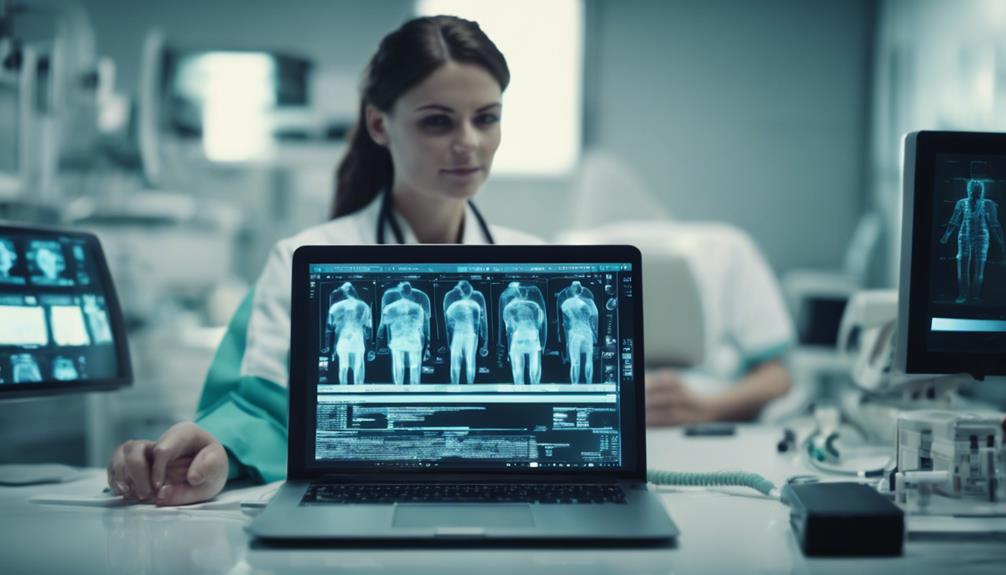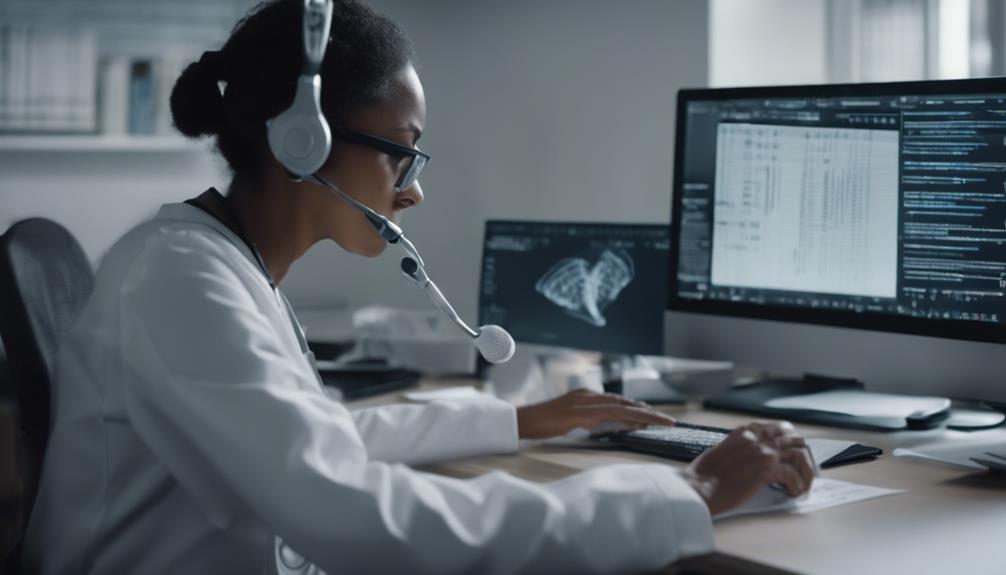As the heartbeat of technological progress quickens, the field of virtual assistants in medical transcription is experiencing a profound metamorphosis. With the convergence of cutting-edge tools and industry demands, virtual assistants find themselves at the nexus of a dynamic evolution. Stay tuned to unravel the intricate layers of change shaping their role and the future landscape of medical transcription.
Technological Advancements
Technological advancements have revolutionized the field of medical transcription, streamlining processes and enhancing accuracy through the integration of virtual assistants. Remote work has become increasingly common in medical transcription, allowing professionals to transcribe patient records from anywhere, leading to improved work-life balance and increased job satisfaction. Virtual assistants play a crucial role in ensuring transcription accuracy by assisting with tasks such as voice recognition software training, identifying errors, and formatting documents correctly.
The integration of virtual assistants has significantly reduced the turnaround time for transcribing medical documents, enabling healthcare providers to access crucial information more quickly. Additionally, these assistants help in maintaining consistency in formatting and terminology across all transcribed documents, enhancing overall quality and readability. By leveraging virtual assistants, medical transcriptionists can focus more on the content of the documents rather than spending excessive time on formatting and other administrative tasks, ultimately leading to higher productivity and improved accuracy in transcriptions.
Market Trends
Amidst the dynamic landscape of the healthcare industry, staying informed about current market trends is essential for medical transcription professionals. In recent years, a notable trend is the increasing shift towards remote work in medical transcription. Many healthcare facilities are opting to outsource their transcription needs to remote virtual assistants, offering professionals the flexibility to work from home. This trend not only provides a better work-life balance for transcriptionists but also opens up opportunities for those residing in geographically restricted areas.
Another significant market trend is the heightened focus on quality control in medical transcription. Healthcare providers are placing a strong emphasis on accuracy and precision in transcribed documents, leading to an increased demand for professionals who can deliver high-quality work consistently. This trend has also created training opportunities for transcriptionists to enhance their skills and stay competitive in the evolving industry landscape. Embracing these market trends can position medical transcription professionals for success in an industry that continues to evolve towards remote work and elevated quality standards.
Demand Projections
With the increasing reliance on remote virtual assistants for medical transcription services, the demand for skilled professionals in this field is projected to continue growing steadily. As more healthcare facilities and transcription companies adopt remote work setups, the need for virtual assistants with specialized medical transcription training is expected to rise. This shift towards remote work allows for greater flexibility and cost-effectiveness, making it an attractive option for both employers and employees.
Training programs tailored to medical transcription are becoming increasingly essential to meet the growing demand for virtual assistants in this field. These programs provide individuals with the necessary skills in medical terminology, transcription techniques, and software proficiency. As the industry evolves, staying updated with the latest advancements in medical transcription technology through training programs becomes crucial for virtual assistants to remain competitive and meet the demands of healthcare providers.
Impact of AI and Automation
AI and automation are revolutionizing the landscape of medical transcription by streamlining processes and enhancing efficiency in documentation tasks. The integration of AI technology in medical transcription software has significantly improved the accuracy and speed of transcribing medical records. AI algorithms can now recognize patterns in speech and text, leading to more precise transcriptions and reducing the chances of errors. Automation efficiency plays a crucial role in this transformation by automating repetitive tasks, such as formatting documents and managing records, allowing medical transcriptionists to focus on more complex aspects of their work. By implementing AI integration and automation tools, medical transcriptionists can complete tasks more quickly and accurately, ultimately improving overall productivity. This shift towards AI and automation in medical transcription not only benefits healthcare providers by ensuring accurate and timely documentation but also enhances the workflow and job satisfaction of transcriptionists.
Future Predictions
Looking ahead, the evolution of technology in medical transcription is poised to reshape the industry landscape significantly. Training programs will adapt to incorporate more advanced tools and software, aiming to equip virtual assistants with the necessary skills to thrive in an increasingly automated environment. As artificial intelligence continues to streamline processes, there will be a shift towards more specialized training to handle complex medical terminologies and diverse documentation styles.
Remote work opportunities are expected to expand as virtual assistants leverage cloud-based platforms and secure communication channels to interact with healthcare professionals seamlessly. The flexibility offered by remote work will attract a wider pool of talent, transcending geographical boundaries and enabling medical transcriptionists to collaborate with practitioners worldwide. This trend towards remote work is likely to increase job satisfaction and productivity among virtual assistants while reducing overhead costs for medical facilities.
Frequently Asked Questions
How Can Virtual Assistants Ensure Patient Confidentiality in Medical Transcription?
Just like a skilled locksmith safeguards treasures, virtual assistants must prioritize patient data security. Adhere to compliance regulations, implement strict privacy measures, and follow confidentiality protocols diligently to ensure patient confidentiality in medical transcription.
Are There Any Specific Certifications Required for Virtual Assistants in Medical Transcription?
To work in medical transcription, certification requirements vary based on employer preferences. Some may require completion of specific training programs or industry-recognized certifications. Research potential employers to understand their particular certification requirements and plan accordingly.
What Are the Challenges Faced by Virtual Assistants Working in Medical Transcription?
You face challenges in time management and quality control while navigating training and keeping up with technology advancements. Balancing these aspects ensures successful virtual assistance in medical transcription, demanding your constant vigilance and adaptability.
How Do Virtual Assistants Handle Complex Medical Terminology and Jargon?
When handling complex medical terminology and jargon, virtual assistants tackle terminology challenges by engaging in specialized training methods. They overcome language barriers by enhancing their context understanding, ensuring accurate and efficient medical transcription services.
Can Virtual Assistants in Medical Transcription Work Across Different Time Zones?
Across time zones, you’ll seamlessly collaborate remotely as a virtual assistant in medical transcription. Embrace flexibility to accommodate different schedules, ensuring accurate and timely transcriptions. Your skills transcend borders, enhancing global healthcare communication.



